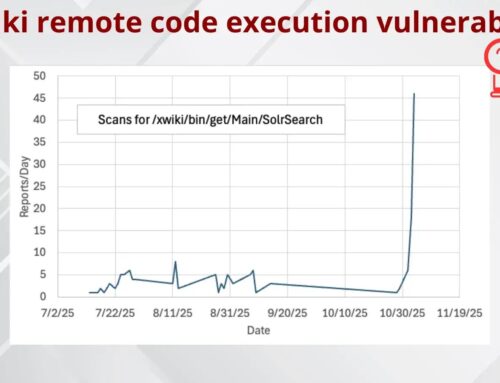
Chinese APT Hackers Using Proxy and VPN Service to Anonymize Infrastructure
The Shifting Sands of Cyber Warfare: Chinese APTs Anonymize Infrastructure with Proxies and VPNs
The landscape of nation-state cyber operations is perpetually evolving, challenging traditional defense mechanisms. A particularly concerning trend observed by cybersecurity researchers involves sophisticated Chinese Advanced Persistent Threat (APT) groups increasingly leveraging commercial proxy and VPN services to obscure their attack infrastructure. This strategic shift significantly complicates attribution and threat hunting, enabling these actors to blend their malicious traffic with legitimate user activity. Understanding this tactic is crucial for organizations seeking to fortify their defenses against these persistent and highly capable adversaries.
The Rise of Commoditized Anonymization
Historically, APT groups might have relied on custom or dedicated infrastructure, which, while offering control, also presented distinct digital footprints. The current embrace of commoditized anonymization platforms
marks a significant departure. By using widely available commercial proxies and VPNs, Chinese APTs effectively dilute their presence within the vast ocean of internet traffic. This makes it challenging for defenders to differentiate between benign user activity and malicious reconnaissance, command and control (C2) communications, or data exfiltration.
The motivation behind this shift is multifold:
- Enhanced Anonymity: Commercial services provide layers of indirection, making it harder to trace the origin of an attack back to the threat actor.
- Cost-Effectiveness: Utilizing existing services is often more economical than building and maintaining dedicated, secure infrastructure.
- Scalability: These services offer immediate access to a vast network of IP addresses, enabling rapid scaling of operations.
- Blended Traffic: Malicious traffic is indistinguishable from general internet browsing, making it difficult for signature-based detection systems to identify.
Initial Compromise Vectors and Exploitation
While the focus is on post-compromise anonymization, understanding the initial entry points remains paramount. Chinese APT groups frequently employ a variety of vectors to gain initial access, often exploiting known vulnerabilities or relying on social engineering tactics. Common initial compromise vectors include:
- Phishing Campaigns: Highly targeted spear-phishing emails containing malicious attachments or links remain a primary vector. These often deliver custom malware or leverage legitimate tools for remote access.
- Exploitation of Public-Facing Applications: Vulnerabilities in web servers, VPN gateways, or other internet-accessible applications are frequently targeted. For instance, exploits against unpatched versions of common enterprise software like (hypothetical example) CVE-2023-12345
(a hypothetical vulnerability in a widely used web server) could provide an entry point. Similarly, misconfigurations in remotely accessible services could be leveraged. - Supply Chain Attacks: Compromising trusted software suppliers to inject malicious code into widely distributed products.
Once initial access is established, the APT group typically deploys custom malware, establishes persistent footholds, and then transitions to using the anonymized infrastructure for subsequent phases of their attack, such as command and control and data exfiltration.
Remediation Actions and Defensive Strategies
Countering APTs that leverage anonymized infrastructure requires a multi-layered and proactive defense strategy. Focusing solely on IP-based blocking is increasingly ineffective. Organizations must prioritize robust security hygiene, advanced threat detection capabilities, and a strong incident response plan.
- Patch Management and Vulnerability Prioritization: Implement a rigorous patch management program. Prioritize patching critical vulnerabilities, especially those affecting public-facing systems. Regularly scan for and remediate misconfigurations.
- Enhanced Network Monitoring and Anomaly Detection: Deploy Network Detection and Response (NDR) solutions capable of analyzing network traffic for anomalous patterns, unusual data flows, and communication with suspicious or rare destinations, even if those destinations are commercial VPN endpoints. Look for behavioral indicators rather than just IP addresses.
- Endpoint Detection and Response (EDR) and Extended Detection and Response (XDR): Leverage EDR/XDR platforms to gain deep visibility into endpoint activities. These tools can detect suspicious process execution, file modifications, and network connections that might originate from compromised systems communicating via anonymized channels.
- Zero Trust Architecture: Implement a Zero Trust model where no user or device is implicitly trusted, regardless of their location on the network. Continuously verify identity and access.
- Advanced Threat Intelligence: Subscribe to and actively utilize threat intelligence feeds that provide insights into attacker tactics, techniques, and procedures (TTPs), new malware families, and indicators of compromise (IOCs) related to specific APT groups.
- Security Awareness Training: Educate employees on phishing, social engineering, and the importance of reporting suspicious activities. Users are often the weakest link.
- Segmentation and Least Privilege: Segment networks to restrict lateral movement if a breach occurs. Implement the principle of least privilege for all users and systems.
- Outbound Traffic Analysis: Pay particular attention to outbound connections from internal networks, especially connections to known commercial VPN/proxy services that are not explicitly authorized. While some legitimate business uses might exist, scrutinize such connections from critical assets.
Tools for Detection and Mitigation
| Tool Name | Purpose | Link |
|---|---|---|
| Snort | Open-source network intrusion detection system (NIDS) capable of real-time traffic analysis and packet logging. Can detect signatures of known malicious activity. | https://www.snort.org/ |
| Zeek (formerly Bro) | Powerful network analysis framework that provides a high-level overview of network activity, logs network connections, and can detect anomalies. | https://zeek.org/ |
| Wireshark | Network protocol analyzer that allows for deep inspection of network traffic. Essential for understanding suspected malicious network flows. | https://www.wireshark.org/ |
| MITRE ATT&CK Framework | Knowledge base of adversary tactics and techniques based on real-world observations. Crucial for understanding adversary TTPs and mapping defensive capabilities. | https://attack.mitre.org/ |
Conclusion: Adapting to an Evolving Threat Landscape
The increasing use of commercial proxy and VPN services by Chinese APT groups underscores a critical shift in adversary methodology. This tactic significantly complicates traditional attribution models and enhances the stealth of their operations. Organizations must move beyond static IP-based defenses and adopt more dynamic, behavioral-based detection strategies. By focusing on robust patch management, advanced network and endpoint visibility, Zero Trust principles, and continuous threat intelligence integration, defenders can build resilient defenses capable of detecting and responding to even the most sophisticated and anonymized threats.





